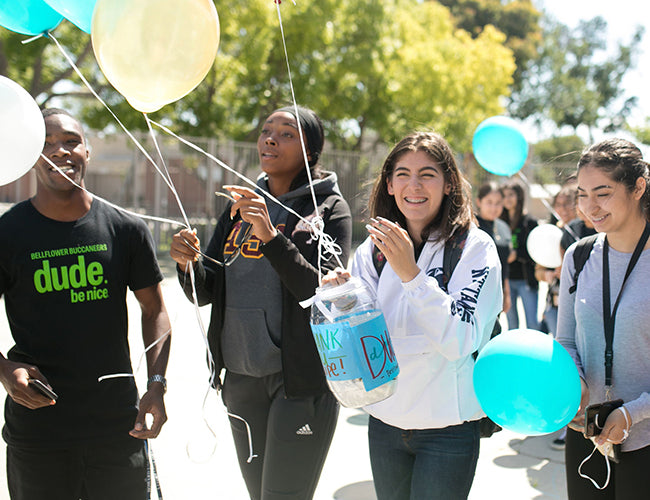3 Ways To Bring Gratitude Into Our Learning Communities

Here’s a confession right out of the gate… I struggle with uncertainty and I can be very impatient. For the most part, I’ve improved with age. That is until March 13, 2020. That date may evoke emotions in you too. For most of us, that Friday the 13th felt like the world was knocked off its axis by COVID-19.
A global pandemic forced us to face the fragility of life and it stripped away many of the everyday things that we tend to take for granted. If ever there was a time to be patient and easygoing, this was it, but I couldn’t get there. Those first two weeks tested me (and many others) personally and professionally. Then, I made a huge shift. I came across Laura Kelly Fanucci’s poem, “When This Is Over”. In the poem, Fanucci beautifully illustrates the everyday things that are actually so special. Even reading a few lines of the poem we are compelled to appreciate the little things and how connected we are as people:
“A handshake with a stranger
Full shelves at the store
Conversations with neighbors”
This is when I made a critical shift and focused my energy on practicing gratitude.
At night, as part of our bedtime routine, my family set aside time to really notice the good in our lives and to acknowledge the people who play a part in bringing that goodness into our lives. The impact on me and those around me was so profound that I started researching the science of gratitude. I learned that the benefits of gratitude include:
- helping us cope with stress
- regulating our emotions
- making us happier
- improving our health
- nurturing relationships
- energizing learning
Sold! I started writing about gratitude and before I knew it, people were reaching out to share how practicing gratitude changed their lives. To be clear, gratitude is not going to solve all of our problems and it’s not going to change things overnight, but when we create a gratitude habit and have a grateful disposition, the benefits are astounding.
In my new book, Evolving with Gratitude, I share what I’ve learned about gratitude using the framework of gratitude with kids, peers, and the world.
Here are three gratitude practices you can start today:
1. Notice-Think-Feel-Do
We want to establish gratitude as a habit, and regularly capturing the things we are grateful for is an excellent way to form that habit. This can happen with gratitude journals and/or jars, but first consider how essential it is that, whatever practice we choose (for ourselves and for our learners), it must be done with intention.
NOTICE-THINK-FEEL-DO are the four essential components of the gratitude experience identified by psychologist Andrea Hussong. According to Hussong, “Based on the scientific literature and our conversations with parents, we’ve come to think about gratitude as an experience that has four parts:
- What we NOTICE in our lives for which we can be grateful
- How we THINK about why we have been given those things
- How we FEEL about the things we have been given
- What we DO to express appreciation in turn”
2. Give 2, Take 2 (Group Activity)
Give each participant two post-it notes and I say, “I want you to write down on a post-it note, something you learned recently that you are grateful for learning. And I want you to write the exact same thing on the other post-it note.” So they have two post-it notes with the same thing, something they learned about that they're grateful for learning about.
Then, follow these steps:
- Ask everyone to stand and walk around the room to find someone to give one of their post-it notes to and they're going to do an exchange. Each person takes a turn explaining their post-it. Essentially, they are swapping things that they're grateful they just learned.
- After the first exchange, each participant goes on to do another exchange with someone different.
- At the end of it, each person has given to two people and two people have given to them.
This is a great way to just take a moment to be grateful that we have learned something and it doesn't even have to tie necessarily with what we're about to learn. We are just trying to bring on a sense of gratitude for learning in general.
3. Savoring Walks
We often think of savoring in the context of food and the ability to completely enjoy what we are eating or drinking, but savoring is really about the ability to enjoy anything fully. It is about being mindful of the experience and more specifically, the internal or external stimuli that are responsible for the positive feeling(s) we are experiencing.
In education, we tend to spend the vast majority of our time learning inside. Why not take learning outside?
A savoring walk is a great brain break (for kids and adults) and it could also serve as a pre-writing/science activity allowing learners to observe nature and their surroundings, noticing all the wonderful details.
You can even offer prompts like “watch an ant for 1 full minute and notice how it moves”, “watch the flight of a bird across the sky”, and “find a cloud and imagine riding on it as it glides across the sky”. Kids can take a notepad with them to capture their thoughts or free write when they return. They could also take a device and capture photos to reference later (as long as the devices don’t become a distraction). Bonus- Asking learners to share their observations can help us, as adults, rediscover the world through a child’s eyes.
Bringing gratitude into our schools we can nurture relationships and cultivate a sense of belonging to build happier and more connected learning communities. We can also improve our overall well-being to have full lives, both personally and professionally. Gratitude can also activate engagement, inspiring learning and leading to academic success.
The time to develop and nurture a grateful disposition is now! Your commitment to experiencing and expressing gratitude will have untold ripple effects making your life and the lives of those around you better.
If you use social media, please consider amplifying your stories of gratitude using the hashtag #EvolvingWithGratitude. Together we can use these small practices to make a big impact with kids, peers, and the world. Let’s start now!
Lainie Rowell is an educator, international consultant, podcaster, and TEDx speaker. She is the lead author of Evolving Learner and a contributing author of Because of a Teacher. Her latest book, Evolving with Gratitude, was just released. An experienced teacher and district leader, her expertise includes learner-driven design, community building, online/blended learning, and professional learning. Lainie’s work has been highlighted in many publications, including Edutopia, OC Family Magazine, eSchool News, ASCD K-12 Leadership SmartBrief, PBS NewsHour, and K-12 Dive. Since 2014, Lainie has been a consultant for the Orange County Department of Education's Institute for Leadership Development. Learn more about Lainie at lainierowell.com and see highlights of her work at /linktr.ee/lainierowell. You can also subscribe to her newsletter at lainierowell.com/subscribe.




Leave a comment